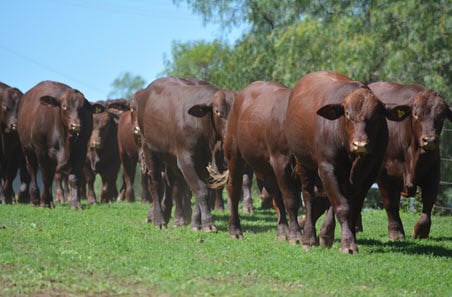Trial verdict: EBVs work

The jury is in - estimated breeding values (EBVs) and selection indexes are tools every bull buyer should be using.
Why? In short, they work.
Making bull buying easier
According to recent Angus Australia and MLA Donor Company-funded research, EBVs are reliable indicators of an animal’s genetic merit and, when applied to bull selection decisions, can be used to significantly improve herd productivity.
Angus Australia’s Breed Development and Extension Manager Andrew Byrne said data sourced from the first three cohorts of the Angus Sire Benchmarking Program (ASBP) emphasized the value of performance recording, genetic evaluation and selection to the seedstock industry.
Several key concepts were explored, including the amount of genetic variation between Angus bulls, and whether the EBVs of young Angus bulls are accurately predicting the performance of their progeny.
“The project demonstrated there was great opportunity to make genetic improvement through careful bull selection, with considerable differences being observed in the progeny from different bulls," Andrew said.
“For example, the progeny from the highest five performing Angus sires for yearling weight had progeny that were, on average, 35kg heavier than the progeny from the five lowest performing sires.
“All other things being equal, at a sale price of $3/kg, this equates to a difference of $105 per animal.”
Dependable predictions
Similarly, the project demonstrated that the EBVs of sires entered in the ASBP reliably predicted the subsequent performance of their progeny.
“We found that most sires will perform as predicted by their EBV, and while some individual sires may perform better or worse than predicted, the EBVs will, on average, provide a reliable indicator of the genetics that sires are delivering to a breeding herd,” Andrew said.
MLA Genetics National Adoption Manager David Packer said while the project focused on the Angus breed, any breed using BREEDPLAN could deliver similar levels of confidence in its genetic selection tools.
“The data provides compelling evidence that producers can use EBVs and indexes as one tool to select for animals with higher genetic merit, leading to an on-farm increase in productivity and profitability,” he said.
BREEDPLAN is now used by more than 30 breed associations in Australia, as well as in the US, Canada, UK, New Zealand and Argentina.
Information and resources:
David Packer
MLA Genetics National Adoption Manager
Email David Packer
Detailed outcomes from this project can be found in the ‘Sire Benchmarking’ section of the Angus Australia website.



